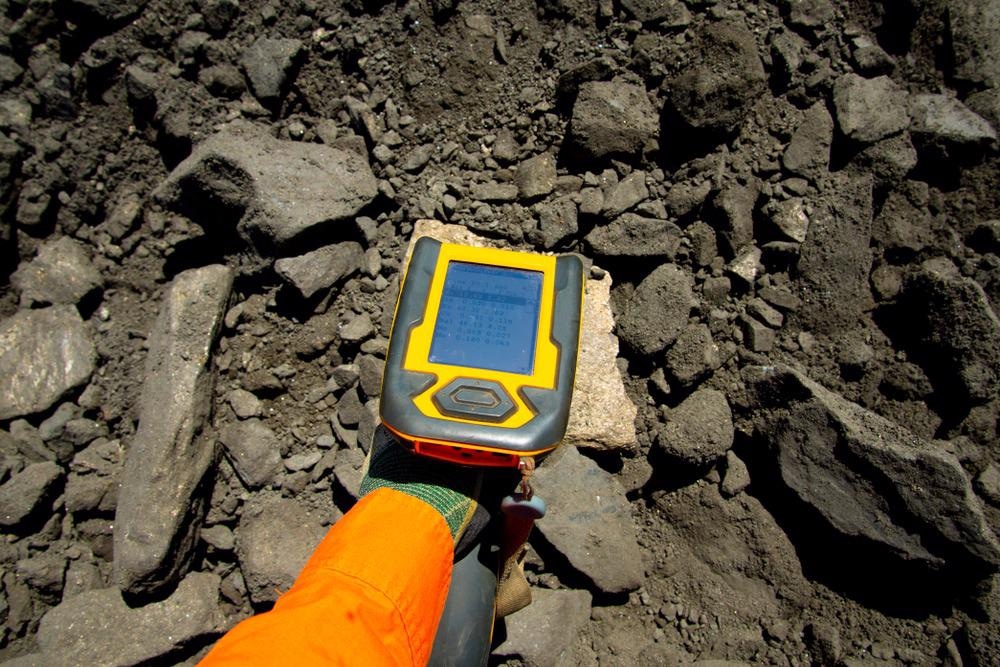自1800年代成立以来,考古学领域就面临着棘手的困境:如何发掘和检查宝贵的历史文物和结构而不会损害它们。不可避免地,该领域中未破坏性测试(NDT)方法和调查技术已经增殖。本文提供了用于考古分析的NDT的关键示例。

Image Credit: Adwo/Shutterstock.com
The importance of NDT survey techniques is widely recognized in the fields of archaeological research, monument preservation and restoration, and antiquary.
NDT methods are employed to understand the extent of archaeological deposits, assess artifacts’ states of preservation without damaging them, and plan excavation or restoration operations that will enable archaeologists to better target and understand features of interest on the prospective site.
任何不会破坏或不可撤销的检查方法损害测试的主题属于NDT横幅。考古学中采用了广泛的技术,包括卫星图像处理,全球定位系统(GPS)调查,X射线荧光光谱学和X线摄影,质谱和铅同位素分析。
NDT for Operations Planning at Tutbury Castle Site
The UK’s Tutbury Castle was recently the subject of extensive NDT surveys that included geospatial technology such as light detection and ranging (LiDAR) sensors, geographical information system (GIS) computing, and GPS data. The program of NDT surveys enabled researchers to explore the castle without undertaking any potentially damaging excavation work
Tutbury Castle is a mostly ruined medieval castle in Staffordshire, England. It is owned by the Duchy of Lancaster but is a UK-government recognized “Scheduled Ancient Monument” that welcomes visitors. Mary Queen of Scots was briefly imprisoned there.
由于该地点的历史重要性,城堡的考古项目仅使用NDT方法,这使其不可能进行挖掘。一项常规的数字调查使团队能够基于差异GPS制作一个常见的空间框架。该团队对城堡内部和土方工程进行了基于地面的激光扫描。
NDT for Conserving Ancient Artworks
Conserving ancient artworks is always important, as they give us a view into the dreams and fears of human societies and cultures that would otherwise be forgotten. Historians use NDT methods to study ancient artworks while keeping them safe for future generations.
主动红外(IR)热成像应用于从源到目标的传热传递的数值模拟,以了解艺术品的特性,但这可能是一种破坏性方法,因为它需要温和地加热零件的表面。
To avoid damage such as color changes or shrink and warp effects, researchers need to understand the nature of pigments used as well as the frame, support, and any foreign materials.
To accomplish this, nondestructive X-ray fluorescence spectroscopy and radiography techniques can be applied. This demonstrates the importance of tweaking, combining, and carefully monitoring different inspection techniques to ensure minimal or no damage to the artwork under study.
NDT确定古代金属硬币的元素组成
A team of chemists from the National Institute of Standards and Technology (NIST), Colorado College, and Maryland’s Mount Saint Mary’s University, have demonstrated how NDT methods can help determine the elemental makeup of ancient coins. The technique even worked on coins that were previously considered to be too corroded for this kind of inspection.
The coins were minted in the ancient Roman colony of Judea in the first century CE. The researchers’ analysis provided insight into the region’s trading patterns and local economy, while raising new questions about the identity of the area’s ruler at the time.
使用的NDT方法包括金属硬币的元素和同位素分析。这些分析可以揭示由于来自不同地区的矿石的独特成分,因此可以揭示地理指纹。结合当地采矿活动的历史记录,该分析可以确定何时铸造硬币。
However, the researchers wanted to precisely pinpoint whether the coins were minted in the 41 - 45 CE by Agrippa I or after 61 CE by Agrippa II. In order to achieve this, they used X-ray fluorescence with lead isotope analysis to precisely identify the ores used to make the coins.
Corrosion typically affects the results of these inspection techniques, and so they are not commonly used on ancient coins. However, the team used polarizing optics with a powerful new software method for analyzing X-ray fluorescence results to overcome these challenges, further combining this with careful mass spectrometer calibration to maximize their outcomes.
The NIST facility was used for lead isotope analysis, and there it was demonstrated that the coins attributed to Agrippa I were in fact minted in that time. However, the analysis also found that copper in the coins probably originated from mines that were previously thought not to have opened for at least another century.
The fact that this ore came from local mines in Arabia may show that Romans reached the region earlier than previously thought, or that the mines were already open when the Romans arrived. In either case, the new findings from NDT suggest that the relationship between ancient Rome and the region was closer than scholars had previously thought.
More from AZoM: Non-Destructive Testing of Computer Components
参考和进一步阅读
布朗,R.A。(1959)。城堡清单,1154–1216。The English Historical Review.https://academic.oup.com/ehr/article-abstract/LXXIV/291/249/441569?redirectedFrom=fulltext
Epstein, M.,et al.(2010) Chemical attribution of corroded coins using X-ray fluorescence and lead isotope ratios: A case study from first century Judaea.应用光谱法.https://journals.sagepub.com/doi/10.1366/000370210791114211
NIST (2010).Nondestructive methods for evaluating ancient coins could be worth their weight in gold. [Online] ScienceDaily. Available at:https://www.sciencedaily.com/releases/2010/05/100527124053.htm
Shrestha, R.,et al.(2021) A numerical–thermal–thermographic NDT evaluation of an ancient marquetry integrated with X-ray and XRF surveys.Journal of Thermal Analysis and Colorimetry.link.springer.com/article/10.1007/s10973-021-10571-2
Disclaimer: The views expressed here are those of the author expressed in their private capacity and do not necessarily represent the views of AZoM.com Limited T/A AZoNetwork the owner and operator of this website. This disclaimer forms part of theTerms and conditionsof use of this website.